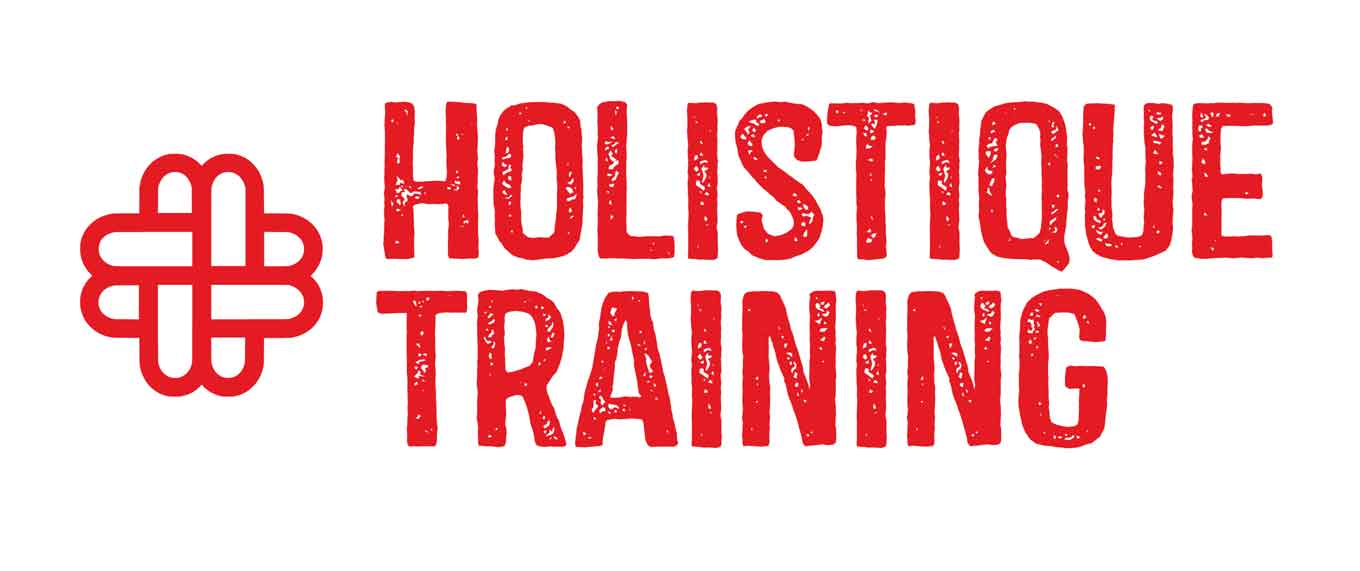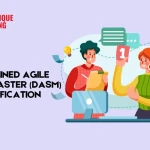- Table of Contents
- 1. Introduction
- 2. The Core Components of EVM: PV, EV, and AC
- Planned Value (PV)
- Earned Value (EV)
- Actual Cost (AC)
- 3. Key EVM Formulas and How They Work
- Cost Variance (CV)
- Schedule Variance (SV)
- Cost Performance Index (CPI)
- Schedule Performance Index (SPI)
- 4. Benefits of Using EVM in Project Management
- Improved Financial Forecasting
- Early Detection of Deviations
- Objective Performance Measurement
- Enhanced Decision-Making
- Proven Results
- 5. Common Challenges in Applying EVM
- Inaccurate or Incomplete Data
- Resistance to Change
- Complexity in Calculation
- Misalignment with Organisational Processes
- 6. EVM vs Traditional Project Tracking Methods
- 7. EVM in Agile and Hybrid Project Environments
- Adapting EVM to Agile Methodologies
- EVM in Hybrid Project Environments
- 8. Tools and Software for EVM Analysis
- Microsoft Project
- Primavera P6 (by Oracle)
- Oracle EVM
- 9. Case Study: EVM in Action
- Challenge
- EVM Implementation
- Outcome
- 10. Best Practices for Implementing EVM Successfully
- Train Your Team
- Integrate with Project Planning
- Standardise Reporting
- Review Regularly
- 11. Conclusion
1. Introduction
Earned Value Management (EVM) is a structured project control methodology that allows organisations to measure project performance in a way that is both quantitative and objective. At its core, EVM integrates three key project elements—scope, time, and cost—to assess how well a project is progressing compared to what was initially planned. Rather than relying solely on budget expenditure or timeline progress as traditional tracking methods do, EVM provides a more sophisticated and holistic approach by evaluating the actual value of work accomplished.
This technique is particularly valuable in large-scale, complex projects where visibility into cost efficiency and scheduling is essential. Whether you're working on an infrastructure project, a technology deployment, or a product development lifecycle, EVM helps in identifying variances early, making it easier to implement corrective actions and avoid surprises later in the project.
In this article, we will take a deep dive into the fundamental components of EVM, explain the essential performance indicators that drive decision-making, and examine both the advantages and limitations of using EVM in various project environments. By the end, you’ll understand how mastering EVM can significantly improve project predictability, accountability, and overall success.
2. The Core Components of EVM: PV, EV, and AC
Understanding Earned Value Management begins with mastering its three foundational metrics: Planned Value (PV), Earned Value (EV), and Actual Cost (AC). These elements form the backbone of all EVM calculations and are crucial for tracking and comparing what was planned versus what was actually achieved.
Planned Value (PV)
Planned Value represents the amount of work that should have been completed at a specific point in time, according to the project plan. It reflects the portion of the total budget allocated to the scheduled tasks up to that date. PV is often referred to as the Budgeted Cost of Work Scheduled (BCWS).
Example: If a two-week activity is budgeted at £50,000, and only one week has passed, the PV is £25,000—indicating the expected expenditure by this point in the schedule.
Earned Value (EV)
Earned Value is the measure of the actual work completed, expressed in terms of the approved budget. Unlike PV, which is based on what should have been done, EV tells you what has been accomplished. It’s also known as the Budgeted Cost of Work Performed (BCWP).
Example: If 60% of the work on that same £50,000 task has been completed by the end of week one, the EV is £30,000—regardless of whether you’re ahead or behind schedule.
Actual Cost (AC)
Actual Cost reflects how much money has been spent to complete the work achieved to date. It is the real cost incurred, and it can be higher or lower than both the EV and PV, depending on the efficiency of execution. This is also called the Actual Cost of Work Performed (ACWP).
Example: If the actual cost incurred in the first week is £35,000, even though only 60% of the work has been done, then AC = £35,000—indicating a possible cost overrun.
Comparison Table: PV vs EV vs AC
Metric | Definition | Example (£) |
PV | Planned cost for scheduled work | £25,000 |
EV | Budgeted cost for actual work completed | £30,000 |
AC | Actual cost incurred | £35,000 |
These three components form the foundation for all subsequent calculations and variance analyses in the EVM framework.
3. Key EVM Formulas and How They Work
To translate EVM data into actionable insights, project managers rely on four key performance indicators. These formulas help evaluate whether a project is performing according to plan and, more importantly, where and why deviations are occurring.
Cost Variance (CV)
Formula:CV = EV - AC
Cost Variance measures the financial efficiency of a project by comparing the budgeted value of completed work (EV) to the actual cost incurred (AC). A negative CV means the project is over budget, while a positive CV suggests cost savings.
Example: CV = £30,000 - £35,000 = -£5,000
The project is £5,000 over budget
Schedule Variance (SV)
Formula: SV = EV - PV
Schedule Variance reflects the difference between what was planned and what has been achieved, in terms of value. A negative SV indicates that the project is behind schedule, while a positive SV suggests that more work has been completed than planned.
Example: SV = £30,000 - £25,000 = £5,000
The project is ahead of schedule by £5,000 worth of work.
Cost Performance Index (CPI)
Formula: CPI = EV / AC
The Cost Performance Index is a ratio that measures cost efficiency. A CPI less than 1.0 indicates that the project is costing more than planned, while a CPI greater than 1.0 signifies cost-efficiency.
Example: CPI = £30,000 / £35,000 = 0.86
The project is only getting £0.86 worth of work for every £1 spent.
Schedule Performance Index (SPI)
Formula:SPI = EV / PV
Schedule Performance Index evaluates the speed of work compared to the plan. An SPI above 1.0 indicates faster progress than expected; below 1.0 suggests delays.
Example: SPI = £30,000 / £25,000 = 1.2
The team is progressing at 120% of the planned schedule.
Together, these indicators enable project managers to forecast potential issues, estimate final project outcomes, and decide on timely corrective measures. When reviewed regularly, they serve as an early-warning system that supports proactive decision-making.
4. Benefits of Using EVM in Project Management
Earned Value Management delivers a range of measurable benefits to organisations seeking greater control over complex projects. From improved forecasting to better risk management, EVM transforms passive monitoring into proactive leadership.
Improved Financial Forecasting
One of EVM’s most significant strengths lies in its ability to generate real-time data on cost efficiency and future expenditure. By comparing actual costs to earned value and planned budgets, project managers can produce accurate financial forecasts, anticipate overruns, and reallocate resources before it’s too late. This proactive approach reduces surprises during audits and improves overall cost predictability.
Early Detection of Deviations
EVM makes it possible to detect discrepancies between the planned and actual performance at a much earlier stage than traditional reporting tools. The use of variances (CV and SV) allows managers to identify inefficiencies in both time and budget, often before they escalate into critical delays or cost blowouts.
Objective Performance Measurement
Unlike subjective or ad-hoc assessments of progress, EVM introduces clear, quantitative benchmarks. By integrating scope, cost, and schedule into a single measurement framework, it enables consistent evaluation across teams, departments, and even international projects. This objectivity fosters transparency and builds trust among stakeholders.
Enhanced Decision-Making
With access to reliable and timely metrics, managers can make informed decisions grounded in data. Whether it's adjusting timelines, negotiating contractor terms, or reassigning tasks, EVM provides the insight required to act decisively and mitigate risk efficiently.
Proven Results
The effectiveness of EVM is well documented. A study published by the Project Management Institute (PMI) found that organisations implementing EVM saw a 12–18% improvement in meeting project objectives, including scope, cost, and schedule.
Additionally, the U.S. Department of Energy reported that incorporating EVM into its capital construction projects led to a 15% reduction in cost overruns and improved schedule adherence.
5. Common Challenges in Applying EVM
While EVM offers undeniable advantages, implementing it effectively comes with a set of challenges. Recognising and preparing for these obstacles is key to ensuring a smooth rollout and sustained impact.
Inaccurate or Incomplete Data
Since EVM calculations depend on precise cost and schedule information, any inconsistency or delay in updating the data can skew the results. This undermines confidence in the performance metrics and may lead to incorrect conclusions about project health.
Resistance to Change
Teams accustomed to simpler or less analytical tracking methods may perceive EVM as overly technical or bureaucratic. Without proper training and change management, this resistance can result in poor adoption and misinterpretation of the metrics.
Complexity in Calculation
EVM introduces several metrics and performance indexes that require analytical skill and familiarity with financial data. In projects without dedicated project control officers or supporting software, teams may find the calculations cumbersome, particularly when dealing with large portfolios or multiple work packages.
Misalignment with Organisational Processes
EVM implementation is most successful when it is integrated with the organisation’s planning, budgeting, and reporting systems. If these frameworks are not aligned—such as using different cost codes or schedule baselines—EVM outputs become fragmented and less useful for decision-making.
6. EVM vs Traditional Project Tracking Methods
Traditional project tracking methods often focus solely on the amount of money spent (cost tracking) or the number of days passed (schedule tracking). While these indicators are valuable, they fail to consider whether the work completed aligns with the project’s actual value.
EVM bridges this gap by introducing a value-based approach. It allows organisations to assess the monetary worth of what has been accomplished—regardless of how much has been spent or how many days have elapsed. This multidimensional view enables deeper insights into project efficiency and health.
Comparison Table: EVM vs Traditional Tracking
Aspect | Traditional Tracking | Earned Value Management |
Focus | Time and cost | Time, cost, and scope |
Progress Evaluation | Based on schedule or cost only | Based on value of work completed |
Forecasting | Often reactive | Predictive and data-driven |
Decision Making | Subjective | Objective and data-supported |
By using EVM, project managers move from passive observation to strategic control, enabling early interventions and enhanced stakeholder reporting.
7. EVM in Agile and Hybrid Project Environments
Earned Value Management (EVM) was originally developed for use in linear, plan-driven (waterfall) projects. However, as modern organisations increasingly adopt Agile and hybrid methodologies to increase adaptability and speed of delivery, EVM has evolved to remain relevant in these dynamic settings. Though the mechanics may differ, the core principles of tracking performance through scope, schedule, and cost still apply—and can provide powerful insights when tailored to fit iterative workflows.
Adapting EVM to Agile Methodologies
Agile frameworks such as Scrum and Kanban are structured around short, iterative cycles (sprints) with flexible scopes and continuous feedback loops. While this appears to contrast sharply with the structured, predictive nature of EVM, integration is both possible and beneficial—especially for stakeholders who still require budget visibility and performance metrics.
In Agile settings, Planned Value (PV) can be calculated by allocating a portion of the total project budget to each sprint based on expected effort or story points. For example, in a 10-sprint project with an overall budget of £100,000, each sprint might carry a PV of £10,000. Earned Value (EV) would then be recorded when a sprint is completed and its committed deliverables are accepted. Actual Cost (AC) is calculated using the team’s burn rate—such as staff hours multiplied by their hourly rates or fixed sprint costs.
Example: If Sprint 2 is completed and accepted, EV = £10,000. If the team spent £9,500 in effort, then AC = £9,500, and CPI = 10,000 / 9,500 = 1.05 (indicating cost-efficiency).
This method enables Agile teams to preserve their iterative rhythm while providing project managers and executives with meaningful financial and schedule performance data.
EVM in Hybrid Project Environments
Hybrid models blend the adaptability of Agile with the governance and predictability of traditional project management. These are increasingly common in large-scale or client-facing projects where flexibility is needed at the development level, but high-level oversight and budget control remain essential.
In such contexts, different components of a project may follow different methodologies. For instance, the product development team may operate using Agile sprints, while infrastructure delivery or procurement follows a waterfall approach. EVM in hybrid models can bridge these workflows by applying traditional cost and schedule controls to fixed-scope segments, while using adjusted Agile-based EVM methods for iterative components.
The key to success lies in maintaining alignment between sprint planning and cost baselines, ensuring that the earned value assigned to Agile deliverables is realistic and consistent with overall project goals. Moreover, stakeholder communication must clearly explain how performance is tracked across differing workflows to avoid confusion or misinterpretation.
This integrated approach is supported by findings from the Project Management Institute (PMI), which revealed that organisations using hybrid project delivery models—alongside practices like EVM—reported significantly better alignment between strategic goals and project outcomes. The PMI Pulse of the Profession report highlights that hybrid models combining Agile and traditional controls led to 23% more projects meeting their intended business objectives.
Such findings reinforce the value of EVM as a unifying framework that enables performance transparency across both iterative and sequential project streams, making it an essential part of the hybrid project manager's toolkit.
8. Tools and Software for EVM Analysis
Several software platforms facilitate the implementation and monitoring of EVM by automating calculations, visualising performance data, and supporting collaboration.
Microsoft Project
Widely used in corporate environments, MS Project supports built-in EVM metrics and allows integration with Gantt charts and time tracking. It is ideal for mid-sized teams seeking an all-in-one scheduling and budgeting tool.
Primavera P6 (by Oracle)
Primavera is known for its robustness in managing large-scale infrastructure and engineering projects. It includes advanced EVM functions, resource levelling, risk management, and multi-user access—making it a preferred choice in construction and utilities sectors.
Oracle EVM
This enterprise-level tool offers full EVM analytics, real-time dashboards, and integration with other Oracle modules such as procurement and finance. It’s particularly suited for regulated industries and government-funded projects.
These tools reduce the administrative burden associated with manual tracking, improve accuracy, and ensure compliance with industry standards and audit requirements.
9. Case Study: EVM in Action
Project: Public Health Infrastructure Upgrade
Sector: Government / Healthcare Construction
Duration: 18 months
Budget: £12 million
Challenge
The project experienced early indications of schedule slippage and budget overruns due to contractor inefficiencies and material delays. Monthly reviews based solely on cost incurred failed to highlight the declining performance.
EVM Implementation
By introducing EVM at the end of the second month, the project team calculated a Cost Performance Index (CPI) of 0.79 and a Schedule Performance Index (SPI) of 0.85, signalling poor performance on both fronts.
Outcome
The project board renegotiated deliverables with subcontractors, enhanced reporting intervals, and restructured task dependencies. By month six, CPI had improved to 1.01 and SPI to 0.98, and the project was ultimately completed within its approved budget and just five days behind schedule.
This example underscores the value of EVM as an early-warning system and a decision-making framework that directly improves project outcomes.
10. Best Practices for Implementing EVM Successfully
To ensure the successful adoption of EVM within any organisation, it’s essential to follow a set of best practices that align strategy, training, and process execution.
Train Your Team
A common barrier to EVM success is lack of understanding. Invest in training not only for project managers but also for finance, scheduling, and technical teams. This ensures cross-functional alignment.
Integrate with Project Planning
EVM must be embedded in the early stages of project planning, particularly during the development of the Work Breakdown Structure (WBS), schedule baselines, and cost accounts. Retrofitting it later can create inconsistencies.
Standardise Reporting
Use consistent formats for dashboards, performance reports, and variance explanations. This promotes transparency and allows stakeholders to quickly interpret the data.
Review Regularly
EVM is most effective when integrated into the project’s routine performance review cycle. Monthly or bi-weekly reviews help catch issues early and maintain accountability.
11. Conclusion
Earned Value Management (EVM) is more than just a tracking tool—it is a comprehensive framework that empowers project managers to lead with clarity, precision, and accountability. By combining scope, schedule, and cost into a single performance measurement system, EVM allows for early detection of issues, accurate forecasting, and data-driven decisions that keep projects on course.
Whether applied in traditional, Agile, or hybrid environments, EVM delivers tangible benefits: from financial discipline to improved stakeholder confidence. Its value is not limited to large-scale operations; even smaller teams and mid-sized projects can gain a competitive edge through EVM’s structured insights.
If you're ready to elevate your project management expertise and implement EVM practices with confidence, we invite you to enrol in the Advanced Project Management: Achieving Excellence course offered by Holistique Training. This course goes beyond the basics—covering advanced planning, risk mitigation, EVM implementation, stakeholder alignment, and much more.
Led by industry experts and packed with practical case studies, this course is your next step towards mastering complex projects and delivering excellence with every milestone.
























